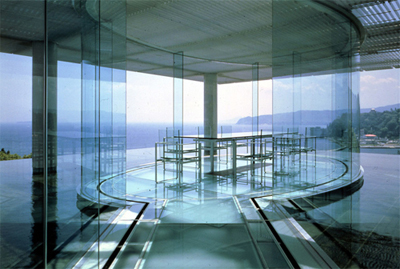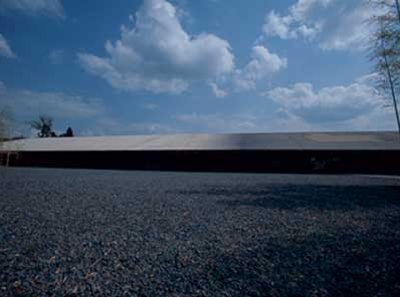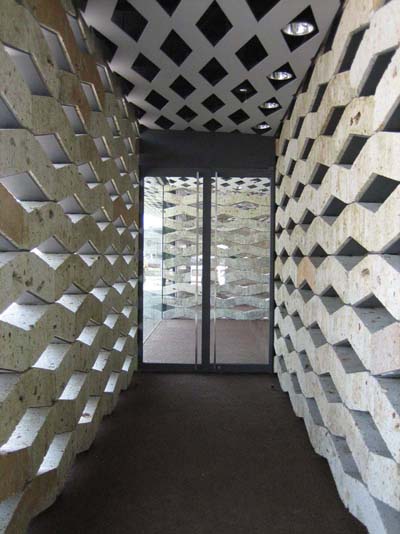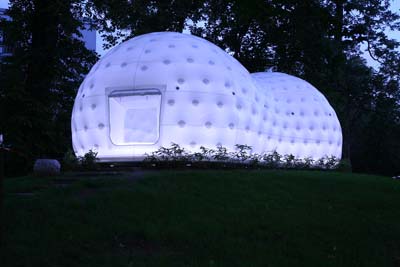
[photo by dbox]
On Monday night BUILD attended the Kengo Kuma lecture at the Seattle Public Library which was a part of the Space.City lecture series. Kuma graduated from the University of Tokyo and Columbia University and then went on to create Kengo Kuma and Associates in 1990. Kuma has a unique way of design in that space becomes more important than the object. He embraces traditional Japanese architecture while implementing new technologies to create beautiful forms. Kuma believes with ever increasing increasing globalization, “place” is becoming more important and that we need embrace the uniqueness of these places in order to maintain individuality.
Many of Kuma’s projects blend with the surrounding environment. He used the term “architecture of disappearance” where the architecture becomes a part of the landscape and the building “sees” rather than being seen.
The Kiro-San Observatory cuts into the mountain and only reveals itself where key views are important.

[photo courtesy of Kengo Kuma & Associates]
The Kitakami Canal Museum is another example of architecture “seeing” rather than being seen.

[photo from Architecture Now 2 by Philip Jodido]
Water/Glass

[photo by Weisheng]
Kuma uses local materials in many of his projects. In the Nakagama-machi Bato Hiroshige Museum of Art he uses cedar from the surrounding mountains. Since the wood is used to the climate he feels that it will better perform under these familiar conditions.

[photo courtesy of Kengo Kuma & Associates]
The Great (Bamboo) Wall uses, once again, a natural bamboo material in several ways. Kuma uses large bamboo as form work for concrete similar to a sonatube that stays in place.

[photo by Ang Morh]
Adobe Repository of Buddha Statue. The blocks from this structure are made from adobe.

[photo courtesy of eartharchitecure.org]
Depth of space is a prevelant theme in Kuma’s architecture. Depth of space creates a certain complexity in a project. Kuma uses many transparent layers to achieve this effect.
Lotus House


[photos courtesy of Kengo Kuma & Associates]
Kuma feels that it is very important for the architect to have a good relationship with the craftsman. This allows for the architect to better understand how materials behave and how new methods can be achieved. The Stone Museum uses a stone, a heavy material, to create a light airy effect.

[photo by e/qual]
Chokkura Plaza


[photos by oTov]
Kuma also enjoys experimenting with materials on his own. He has created several Tea Houses out of new materials but has maintained the overall themes of the traditional Tea House.
Inflatable Tea House

[photo by archidaiski0001]





